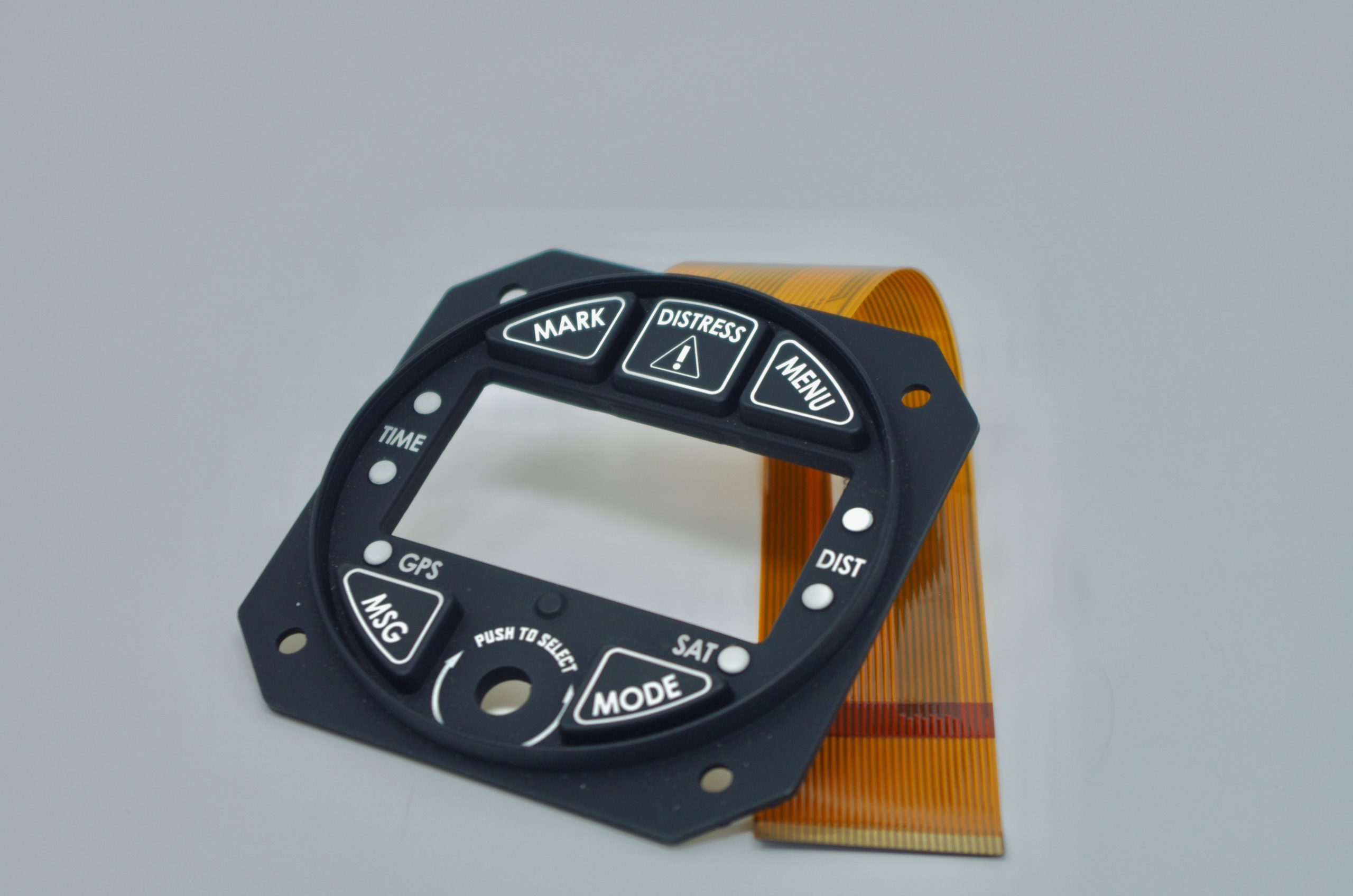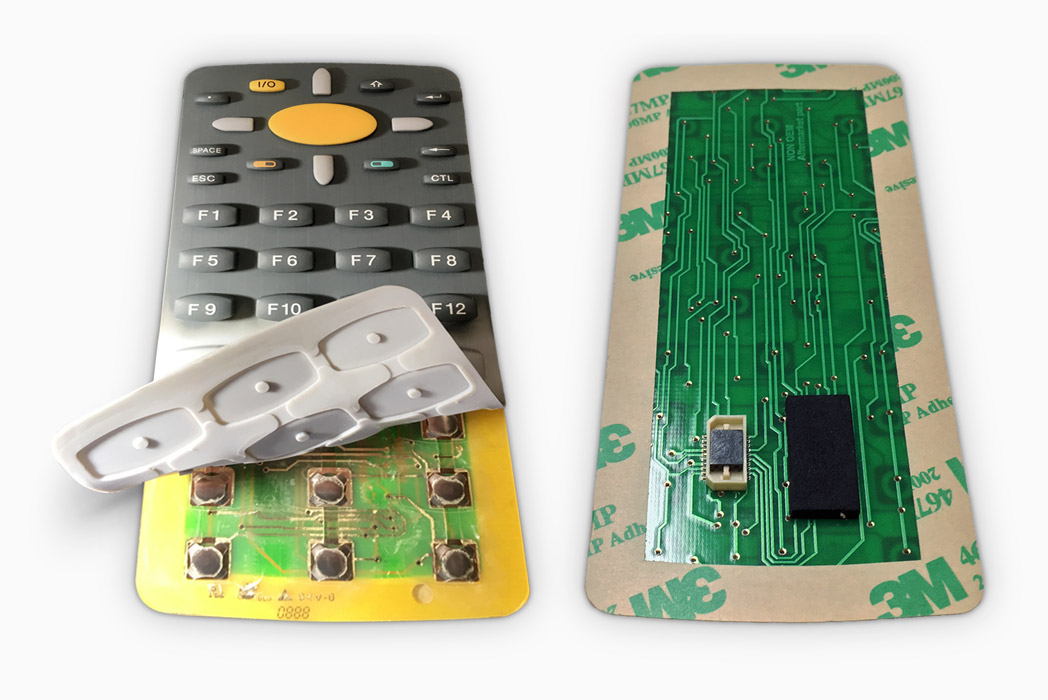A Comprehensive Guide to the Manufacturing and Processing of Rubber Keypads for Ideal Efficiency
The production and processing of rubber keypads play an essential function in their performance and use. Product choice, design accuracy, and innovative production methods considerably impact their durability and effectiveness. Recognizing these elements is essential for creating high-quality products. As different developments emerge in this field, exploring their ramifications could reveal brand-new requirements for capability and individual experience. What essential facets will form the future of rubber keypads?
Understanding Rubber Keypads: Products and Types
Rubber keypads are crucial components in many tools, using a balance of durability and tactile feedback. These keypads are primarily made from silicone or artificial rubber, materials selected for their flexibility and resilience. Silicone rubber, in particular, is favored for its outstanding temperature level resistance and longevity, making it suitable for various applications, from consumer electronic devices to commercial equipment.
There are several kinds of rubber keypads, consisting of dome switch keypads, which make use of a dome-shaped device that supplies tactile feedback when pressed. Furthermore, there are also level keypads, which include a smooth surface area and are usually used in medical tools and remote controls. The choice of product and kind affects the keypad's efficiency, feel, and total user experience. Understanding these facets is crucial for manufacturers and developers intending to create efficient and trustworthy interfaces in their items.
The Manufacturing Refine: From Style to Production
The manufacturing process of rubber keypads involves several crucial stages, beginning with design and ending with manufacturing. Originally, developers produce detailed specifications and prototypes, assuring the keypad satisfies functional and visual requirements. Computer-aided design (CAD) software is usually used to imagine the layout and functions prior to proceeding.
When the style is finalized, product choice is essential, with options normally consisting of silicone or natural rubber. In the following stage, molds are created based on the approved styles, which will form the keypads during manufacturing.
Complying with mold and mildew development, the production phase commences, where rubber is blended with additives to boost performance. The mixture is after that put into mold and mildews and based on heat and pressure, permitting it to strengthen and heal.
The completed keypads undertake top quality checks to verify they satisfy established criteria, complied with by packaging for circulation. This comprehensive process warranties peak efficiency in the end product.
Secret Methods in Rubber Molding
In the domain name of rubber keypads, various molding techniques play a crucial function in identifying the quality and functionality of the final product. One widespread approach is compression molding, where raw rubber is positioned in a warmed mold and pressure is applied, permitting efficient automation and uniformity. An additional considerable method is injection molding, which includes infusing heated rubber into a mold, using greater accuracy and complicated forms. Transfer molding, a hybrid of both methods, is likewise used, especially for intricate styles, as it incorporates the advantages of both procedures. Additionally, liquid silicone rubber (LSR) molding is getting traction because of its versatility and durability, making it optimal for high-performance applications. Each technique has unique attributes, affecting aspects such as cycle time, material waste, and manufacturing prices. Choosing the ideal molding method is essential for attaining peak efficiency in rubber keypads.
Surface Area Finishing and Texturing Options
Surface completing and texturing alternatives play an important function in boosting the tactile experience and aesthetic allure of rubber keypads. Makers employ numerous strategies to produce distinct surface area characteristics that impact customer communication and product style. Usual finishing techniques consist of matte, shiny, and satin surfaces, each providing different visual impacts and hold levels. Texturing alternatives, such as increased patterns, grooves, or stippling, better improve capability by improving traction and lowering slippage throughout use.
In addition, specific appearances can be customized to satisfy ergonomic requirements, offering convenience during long term use. The choice of surface coatings and structures can be influenced by the designated application of the keypad, whether it be for consumer electronics, auto controls, or commercial devices. Ultimately, careful consideration of these choices adds greatly to user complete satisfaction and overall item performance, making them essential elements in the design and manufacturing process of rubber keypads.
Quality Assurance Measures in Rubber Keypad Manufacturing
Quality assurance procedures in rubber keypad manufacturing are critical for ensuring product integrity and efficiency. These actions encompass product option standards, extensive testing procedures, and strict final assessment standards. Together, they create an extensive framework that assists makers maintain top quality throughout the manufacturing procedure.

Product Choice Requirements
Picking the ideal products for rubber keypads is crucial, as it directly impacts their performance, longevity, and individual experience. Secret standards for product choice include tensile strength, strength, and environmental resistance. The option of rubber substance, such as silicone or thermoplastic elastomer (TPE), plays a critical role in achieving desired responsive feedback and long life. Furthermore, aspects like chemical compatibility, temperature level stability, and UV resistance have to be considered to ensure optimal efficiency in numerous applications. Producers should also examine the ease of handling and cost-effectiveness of products, balancing quality with budget plan constraints. Inevitably, the right product selection not only enhances the keypad's efficiency but additionally adds to general product high quality and customer satisfaction.
Checking Treatments Executed
After identifying the appropriate products for rubber keypads, extensive testing treatments are executed to verify that the last items fulfill sector criteria and consumer assumptions. These procedures commonly consist of mechanical testing, which reviews the durability and flexibility of the rubber under different problems. Furthermore, environmental screening evaluates the keypads' performance under temperature level fluctuations, moisture, and exposure to chemicals. Electrical screening confirms the keypads work correctly with electronic elements, verifying responsiveness and conductivity. Tactile responses is evaluated to assure customer satisfaction. These extensive screening actions are important in identifying any inconsistencies or defects before automation, inevitably improving the integrity and performance of rubber keypads in their designated applications.
Last Examination Requirements
Comprehensive last inspection criteria are vital in rubber keypad manufacturing to ensure that each system meets the specified standards for capability and appearance. This process generally involves visual evaluations to recognize any kind of surface issues, such as discoloration or flaws. Furthermore, tactile assessments determine that the keypads react precisely to touch, keeping the required level of sensitivity. Resilience tests may additionally be performed, replicating long term use to validate the long life of the keypad under various conditions. Additionally, adherence to industry regulations and customer specifications is confirmed to maintain top quality assurance. By carrying out these rigorous inspection actions, manufacturers can considerably lower the risk of flaws, ensuring that the end product is trusted and fulfills customer expectations, inevitably improving consumer contentment.
Technologies in Rubber Keypad Modern Technology
As modern technology continues Rubber Keypads to progress, technologies in rubber keypad technology are reshaping interface across numerous markets. One substantial improvement is the combination of capacitive touch sensing units within rubber keypads, enabling an extra responsive and flexible user experience. This innovation allows users to engage with devices with touch, boosting performance without giving up the responsive comments that rubber keypads are understood for.
In addition, improvements in material formulas have caused the advancement of more durable, weather-resistant rubber, making keypads ideal for exterior and commercial usage. Enhanced printing techniques additionally permit high-resolution graphics and backlighting choices, increasing exposure and aesthetic appeal.

Advancements in producing processes, such as 3D printing, are making it possible for customized layouts and fast prototyping, enhancing production timelines. These developments collectively add to more efficient and user-friendly rubber keypads, guaranteeing they satisfy the demands of contemporary applications while preserving their core advantages.
Best Practices for Design and Capability
Creating reliable rubber keypads needs careful assessment of both aesthetic appeals and performance. Rubber Keypads. A well-designed keypad ought to stabilize ergonomic concepts with visual charm to boost customer experience. Key variables consist of size, form, and spacing of buttons, guaranteeing they are easy to press while stopping unexpected activation. Using contrasting shades and appearances can enhance visibility and responsive responses, aiding individuals in comparing secrets
Furthermore, the selection of materials plays an essential function; high-grade rubber compounds can boost sturdiness and check my blog resistance to wear. It is likewise important to take into consideration the assimilation of attributes such as backlighting and custom-made graphics, which can improve use in numerous environments.
Lastly, prototyping and customer screening are indispensable in the design procedure, permitting changes based on real-world feedback. By adhering to these finest methods, makers can create rubber keypads that not only look attractive but also fulfill the functional requirements of users effectively.
Frequently Asked Concerns
Exactly how Do I Pick the Right Rubber Product for My Keypad?
To pick the right rubber product for a keypad, one need to consider aspects such as resilience, ecological resistance, tactile feedback, and compatibility with the desired application, guaranteeing suitable efficiency and individual satisfaction in numerous problems.
What Are the Ecological Influences of Rubber Keypad Production?
Rubber keypad production can lead to environmental impacts such as logging for all-natural rubber resources, pollution from chemical processes, and waste generation. Lasting practices and products can minimize several of these unfavorable results on environments.
Can Rubber Keypads Be Recycled or Reused?
Rubber keypads can be reused, but the process depends upon the specific products used in their production. Recycling them in different applications is likewise possible, adding to squander decrease and promoting sustainability in manufacturing practices.
What Is the Ordinary Lifespan of a Rubber Keypad?
The average life-span of a rubber keypad commonly ranges from 5 to 10 years, relying on usage, ecological elements, and maintenance. Routine treatment can expand its functionality, while extreme wear may shorten its resilience.
Are There Any Type Of Wellness Concerns Connected To Rubber Keypad Materials?
There are potential wellness problems connected to rubber keypad materials, including allergies to particular chemicals and toxic irritants made use of in manufacturing. Correct handling and understanding of material make-up can mitigate these risks click here to find out more for individuals.
There are numerous kinds of rubber keypads, including dome button keypads, which use a dome-shaped system that supplies responsive feedback when pushed. Selecting the ideal products for rubber keypads is essential, as it directly influences their capability, sturdiness, and customer experience - Rubber Keypads. After identifying the suitable products for rubber keypads, rigorous testing procedures are carried out to verify that the last products meet sector requirements and client expectations. Rubber keypad manufacturing can lead to environmental effects such as logging for natural rubber sources, contamination from chemical procedures, and waste generation. Rubber keypads can be recycled, yet the procedure depends on the specific materials used in their manufacturing